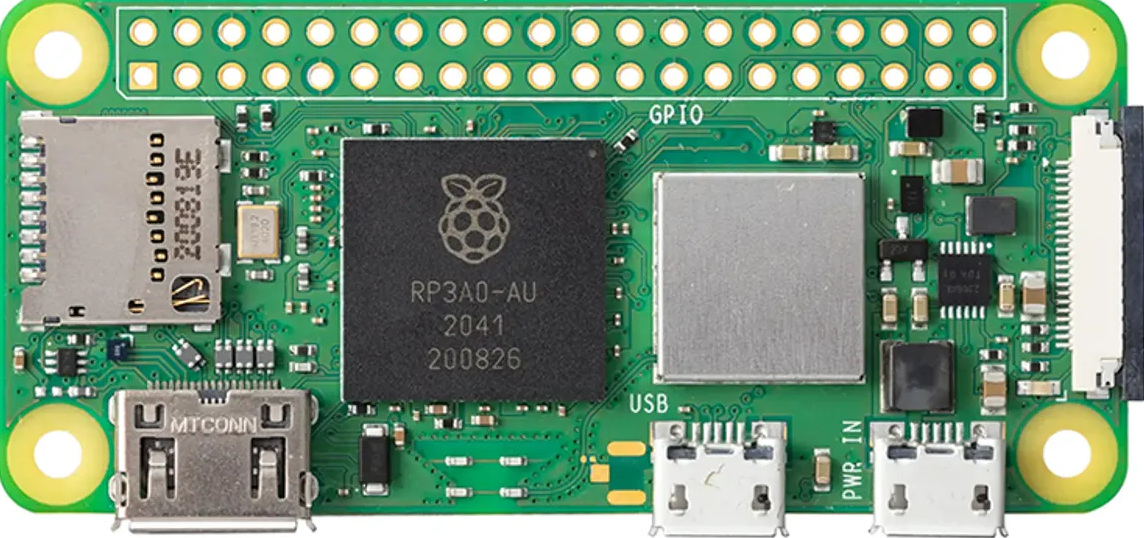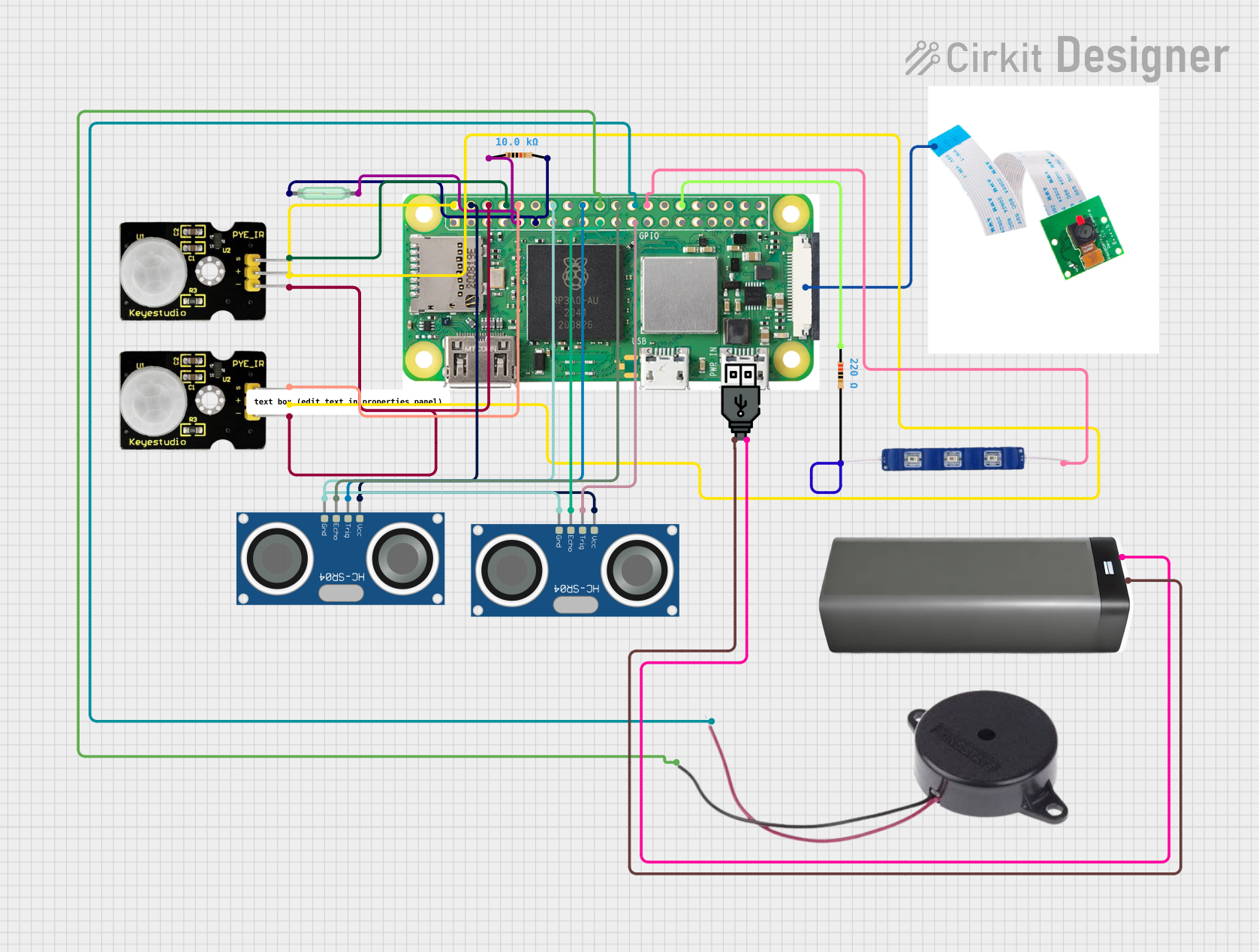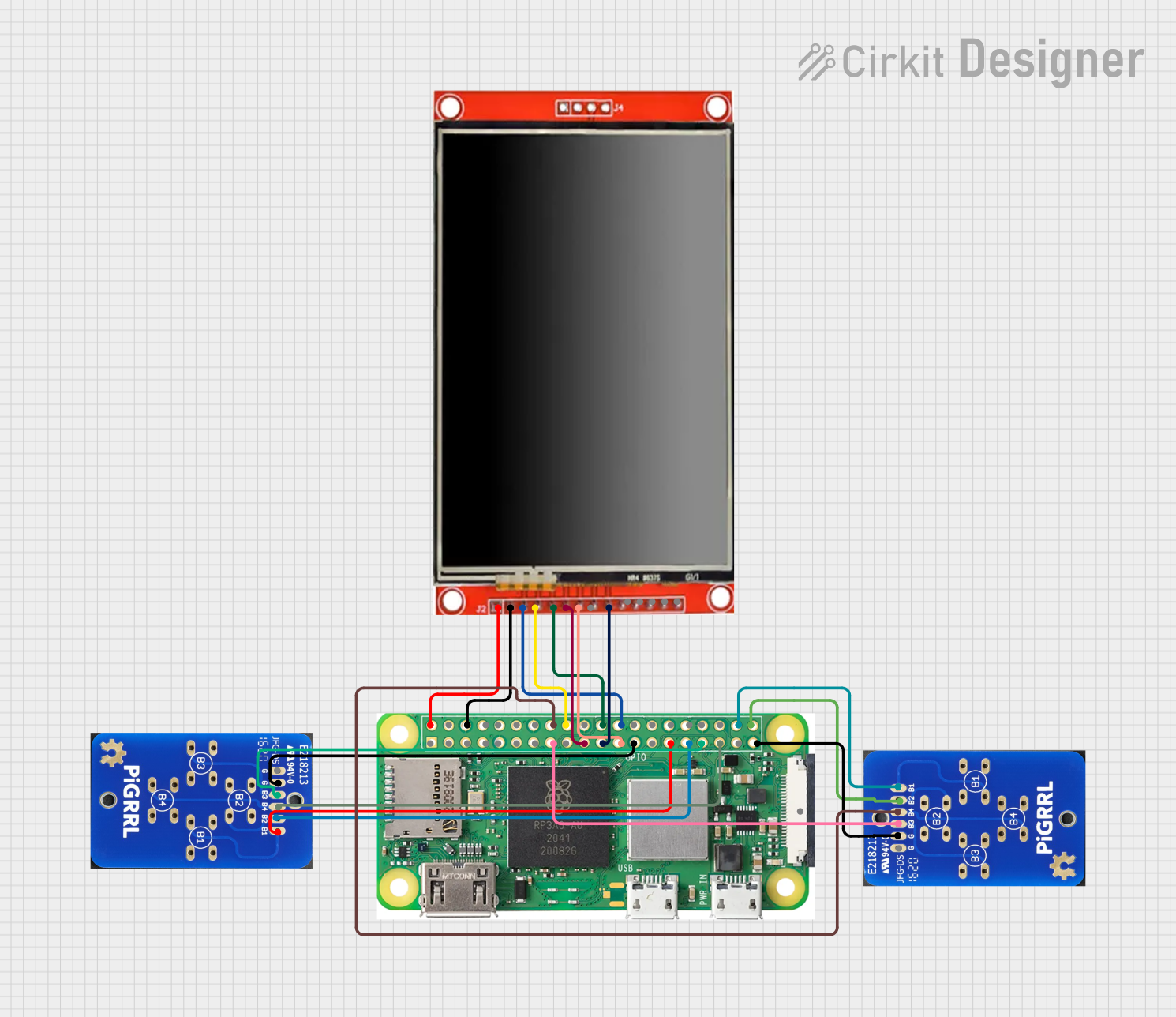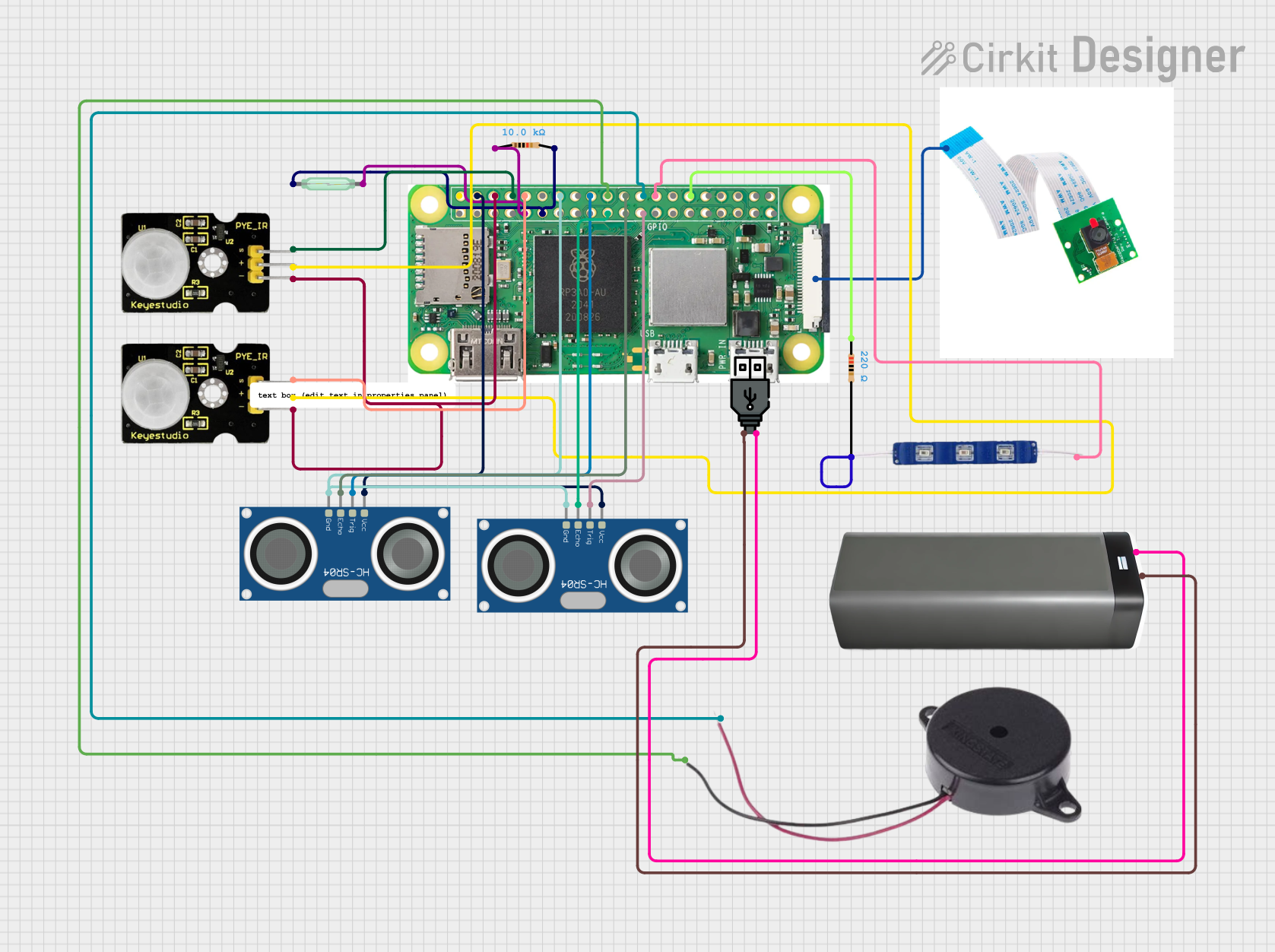
How to Use Raspberry Pi zero w: Examples, Pinouts, and Specs

 Design with Raspberry Pi zero w in Cirkit Designer
Design with Raspberry Pi zero w in Cirkit DesignerIntroduction
The Raspberry Pi Zero W is a highly compact single-board computer that integrates wireless LAN and Bluetooth connectivity, making it an ideal choice for a wide range of embedded projects, from DIY enthusiasts to educational purposes. Its small form factor and low power consumption, combined with its wireless capabilities, allow for its use in IoT devices, wearables, and portable applications.
Explore Projects Built with Raspberry Pi zero w

 Open Project in Cirkit Designer
Open Project in Cirkit Designer
 Open Project in Cirkit Designer
Open Project in Cirkit Designer
 Open Project in Cirkit Designer
Open Project in Cirkit Designer
 Open Project in Cirkit Designer
Open Project in Cirkit DesignerExplore Projects Built with Raspberry Pi zero w

 Open Project in Cirkit Designer
Open Project in Cirkit Designer
 Open Project in Cirkit Designer
Open Project in Cirkit Designer
 Open Project in Cirkit Designer
Open Project in Cirkit Designer
 Open Project in Cirkit Designer
Open Project in Cirkit DesignerCommon Applications and Use Cases
- IoT devices
- Home automation systems
- Wearable technology
- Educational projects for learning programming and electronics
- Portable applications
- Prototyping for software and hardware development
Technical Specifications
Key Technical Details
- SoC: Broadcom BCM2835
- CPU: ARM11 running at 1GHz
- RAM: 512MB
- Wireless: 2.4GHz 802.11n wireless LAN
- Bluetooth: Bluetooth 4.1, Bluetooth Low Energy (BLE)
- Power Ratings: 5V/1.2A via micro USB or GPIO header
- Storage: microSD card slot for operating system and data storage
- Dimensions: 65mm x 30mm x 5mm
Pin Configuration and Descriptions
| Pin Number | Name | Description |
|---|---|---|
| 1 | 3V3 | 3.3V Power Supply |
| 2 | 5V | 5V Power Supply |
| 3 | GPIO2 | SDA (I2C) |
| 4 | 5V | 5V Power Supply |
| 5 | GPIO3 | SCL (I2C) |
| 6 | GND | Ground |
| ... | ... | ... |
| 39 | GND | Ground |
| 40 | GPIO21 | SPI MISO |
Note: This table is not exhaustive. Refer to the official GPIO pinout diagram for complete details.
Usage Instructions
How to Use the Raspberry Pi Zero W in a Circuit
Power Supply: Connect a 5V micro USB power supply to the PWR IN port. Ensure that the power supply can provide sufficient current (at least 1.2A).
MicroSD Card: Insert a microSD card with the appropriate Raspberry Pi OS image into the microSD card slot.
Peripherals: Connect necessary peripherals such as a keyboard, mouse, and display through the mini HDMI port or USB OTG port.
GPIO Connections: Use the GPIO header for connecting sensors, actuators, or other modules. Be mindful of the voltage levels and current limitations.
Wireless Setup: Configure the wireless LAN and Bluetooth through the Raspberry Pi OS's networking interfaces.
Important Considerations and Best Practices
- Always handle the Raspberry Pi Zero W with care to avoid static discharge or physical damage.
- Use a proper power supply to prevent undervoltage issues.
- Consider using a case to protect the Raspberry Pi Zero W and prevent short circuits.
- Keep the Raspberry Pi Zero W in a well-ventilated area to avoid overheating.
- Regularly update the Raspberry Pi OS and firmware to ensure security and stability.
Troubleshooting and FAQs
Common Issues Users Might Face
- Power Issues: If the Raspberry Pi Zero W fails to boot, check the power supply and micro USB cable for faults.
- MicroSD Card Problems: Ensure the microSD card is properly formatted and contains the correct OS image.
- Wireless Connectivity: If experiencing issues with Wi-Fi or Bluetooth, verify the network settings and ensure the antennas are not obstructed.
Solutions and Tips for Troubleshooting
- Verify that all connections are secure and correct.
- Check the Raspberry Pi Zero W's LEDs for status indications.
- Consult the official Raspberry Pi forums and documentation for support.
- Use a different power supply or microSD card if issues persist.
FAQs
Q: Can the Raspberry Pi Zero W run a full desktop environment? A: Yes, but it may be slower compared to more powerful Raspberry Pi models.
Q: How do I access the Raspberry Pi Zero W remotely? A: You can enable SSH or VNC through the Raspberry Pi configuration settings for remote access.
Q: Is it necessary to use a heatsink with the Raspberry Pi Zero W? A: For most applications, a heatsink is not required, but it can be beneficial for thermal management during intensive tasks.
Q: Can I power the Raspberry Pi Zero W from the GPIO pins? A: Yes, but it is recommended to use the micro USB port to ensure a stable power supply.
For more detailed information, refer to the official Raspberry Pi Zero W documentation.